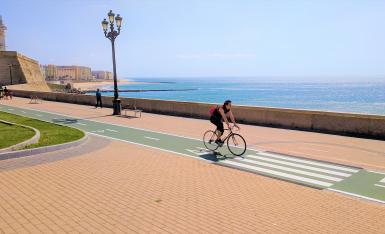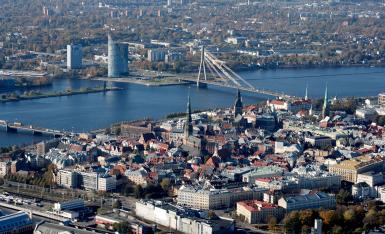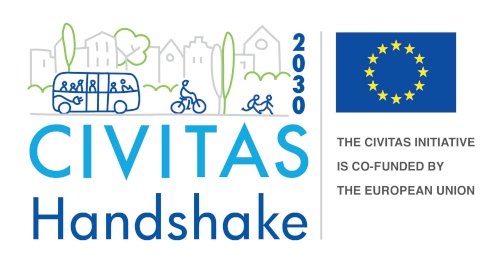Modelling and Assessment
Cycle Modelling
The use of data to predict how people may travel, with the aid of computational programmes, is known as transport modelling. It aims to estimate how people may adapt to changes in the layout, quality and management of streets and infrastructure. Doing this "virtually" prior to constructing infrastructure can avoid costly changes or poor outcomes from investment. However "traffic models" in the past have often focussed on how motor vehicles respond to change, and this has resulted in infrastructure that continues to emphasise motorised forms of transport. More recently, models have been created and used which better demonstrate the business case for the better integration of walking and cycling into design solutions.
A foresight for cycling
Actions to program traffic lights and signals to speed up cycling across the transport system will be developed in Handshake. Cycling models can also help demonstrate demand, as well as geographically show where cyclists most want to travel at a junction or across a network (desire lines), as well as gaps in the provision or attractiveness of routes. Data will be identified and collected which will help models more accurately simulate current and future levels of cycling movement.
Cities using this solution

Leader: Copenhagen
Customised traffic modelling tools developed to calculate bicycle traffic capacity and flow. Copenhagen is developing a traffic model that integrate cyclists and estimates streams of cyclists through specific corridors in the city. Furthermore Copenhagen has developed a traffic model for intersections (CyKap) that is currently being tested and implemented. Copenhagen wants to test the traffic models and share knowledge with other cities that are working with traffic models. The learning points from the test can be transferred to other cities.

Follower: Cadiz
In PMUS action Plan, GM14 action includes the elaboration of the "Director of Bicycles Plan". This master plan, which is pending elaboration, collects "Safety measures for
cyclists” among its strategic lines of action. It is necessary to define traffic-calming areas in combination with motorized and non-motorized transport modes and to include intelligent signalling and traffic lights for cyclists in the network.

Follower: Riga
Concerning cycling traffic modelling and intelligent signal management, there are no such activities held in the city and the issue is very urgent. Though there are already some privileges and separate street light system set up on the cycling paths ensuring some additional safety to cyclists, a lot of additional work is required to make the cycling network integrated to all the road system.

Follower: Turin
Turin needs to setup a real-time monitoring system with wireless sensors. At the moment, the only figures are derived from interviews and with daily monitoring campaigns, insufficient to model data. Data is needed to build the first cycling traffic model and to draw a complete picture of the bicycle modal share of the city. The analysis of actual and future demand is part of the traffic modelling of the city.
